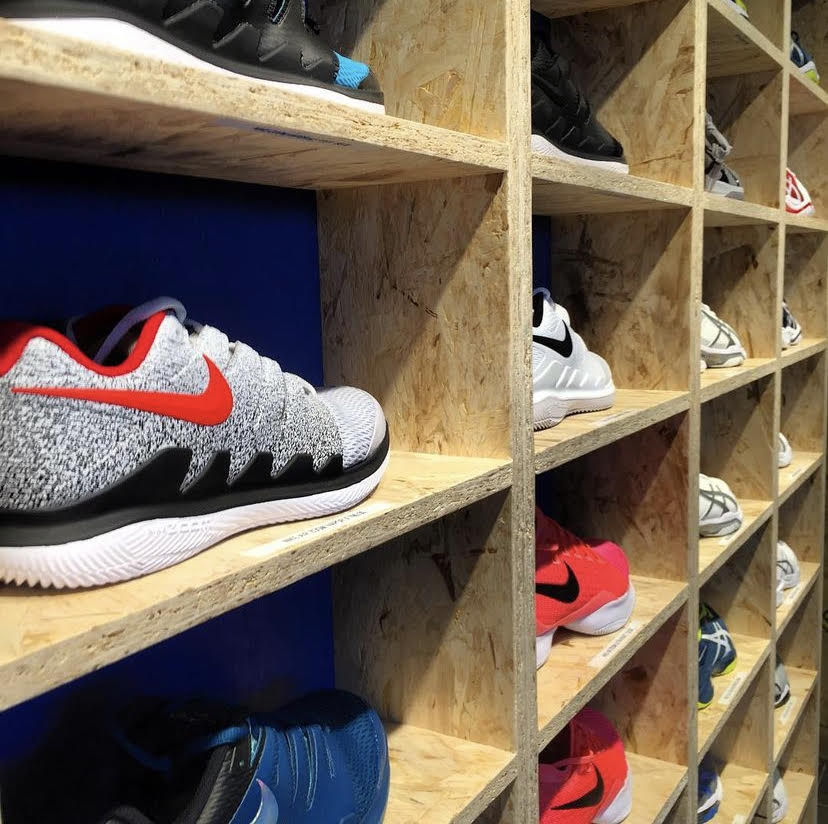
How to choose your tennis shoe
Share
The beauty of tennis is its accessibility. Little equipment is needed to start practicing this sport; a good racket and a good pair of shoes. Do not neglect the latter, because choosing the perfect shoe for tennis will bring to your game all the desired advantages, while filling some gaps. There are four categories of shoes on the market, here is the description.
In this article:
- COMFORT SHOES
- STABILITY SHOES
- ENDURANCE SHOES
- CASUAL PLAYERS SHOES
- CLAY SHOES
COMFORT SHOES
BENEFITS
- Softness
- Shock absorption
- Lightness
DISADVANTAGES
- Less durability
- Less stability
Comfort shoes will be the favorite of players with knee problems, since this category of shoe is built under the concept of softness and shock absorption. A generally thicker and softer (less dense) sole absorbs the majority of vibrations and makes the tennis experience much more enjoyable.
However, the latter will also be more fragile against abrasive surfaces. It will therefore have to be replaced more often. A shoe often lighter, but also much less stable than the majority of other categories. It should be noted that the softer sole will also be less stable. Here are examples of shoe models in this category: Nike Air Zoom Vapor, Babolat Jet Mach, Adidas Adizero Ubersonic 4, Asics Solution Speed FF.
STABILITY SHOES
BENEFITS
- Stability
- Ankle support
- Feeling
DISADVANTAGES
- Less solid than the endurance category
- More Vibration allowed
Shoes in this category will be welcome with players with fragile ankles, but also competitive players. Stable shoes will have a much thinner sole, which confers a lower center of gravity, which will bring you much more stability. Contrary to popular belief, the majority of ankle support is done through the sole, not through ankle reinforcements.
Also, a thinner sole will let more vibrations through, but provide an unmatched feel for a competitive player. Less solid than the endurance category, but much more stable. Comfort can often be equal to or greater than the endurance category, but it will always be more stable than the other two categories. Here are examples of shoe models in this category: Nikecourt Zoom NXT, Babolat Propulse Fury, Asics Gel-Resolution 8, Head Revolt Pro 3.5.
ENDURANCE SHOES
BENEFITS
- Solidity
- Stability
DISADVANTAGES
- Less comfort
- Heavier shoe
This category is always popular, since it contains the shoes with the strongest confections, prized by the parents of tennis players. As the name suggests, a shoe classified in this category will usually be stronger at the expense of a little softness.
These shoes will also be a bit heavier than those in the comfort, stability and casual player categories. It must also be taken into account that a sole with a harder density will be less fragile, but will let more vibrations pass through. The endurance shoe usually also has a lot of lateral support, but not as much as the stability category. Here are examples of shoe models in this category: Nike Air Zoom Vapor Cage 4, Adidas Barricade, New Balance 806 series, Wilson Rush Pro.
CASUAL GAMERS SHOES
BENEFITS
- Less expensive
- Comfortable
DISADVANTAGES
- Less solid
- Short-term comfort
The latter category is for consumers who will have a smaller budget, and who are not necessarily looking to pay for all the technologies available on the market. Shoes usually made of basic materials, lighter, but also much more fragile.
Note that shoes in this category frequently have the same colors and layouts as the more high-end models in their respective series. It will also be necessary to be careful with this category, because it can be misleading; a first it will not be different in sensation from a comfort shoe, but its often weaker materials often sag quickly, unlike comfort shoes.
It is important to know that players of large size (200 pounds and more) should refrain from choosing this category, as it will not be able to offer the necessary support. Here are examples of shoe models in this category: Asics Gel-Challenger, Nike Air Max Volley, Babolat Pulsion, Adidas Game Court.
CLAY SHOES
With the growing popularity and accessibility of clay courts, clay shoes have become a must. The main difference of the latter versus called all court shoes is at the level of the sole. There are much deeper grooves that will help to bite into the earth with more ease. Think of a 4x4 truck.
These grooves, well arranged in width on the shoe will help the player to slide on the field laterally with more support, as required by the type of play on this surface. Important to note that this deeper groove also makes the shoe less durable, especially if used anywhere else that on a clay court.